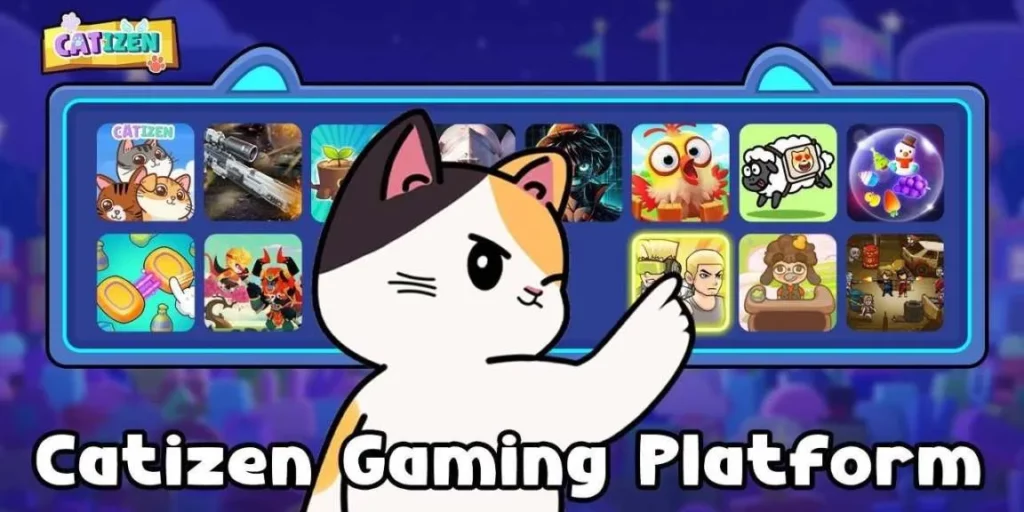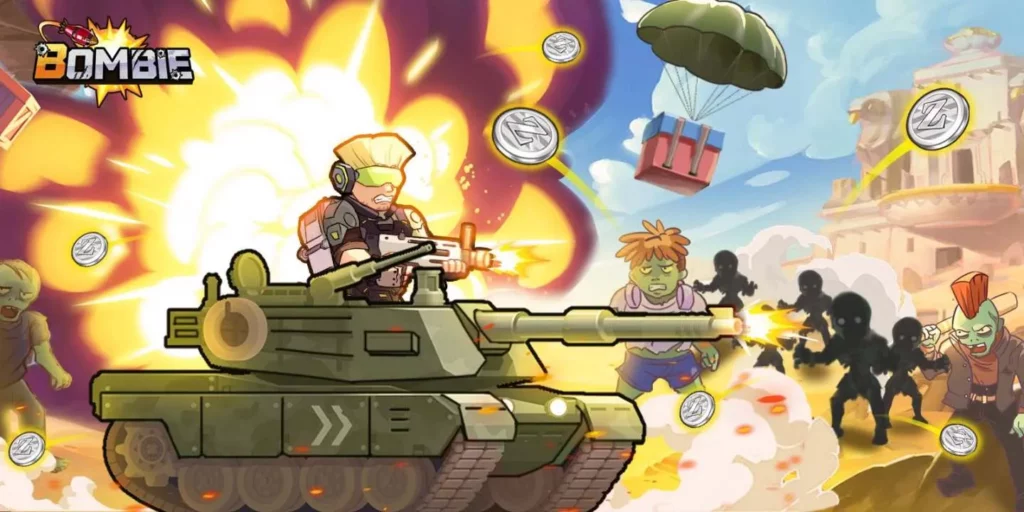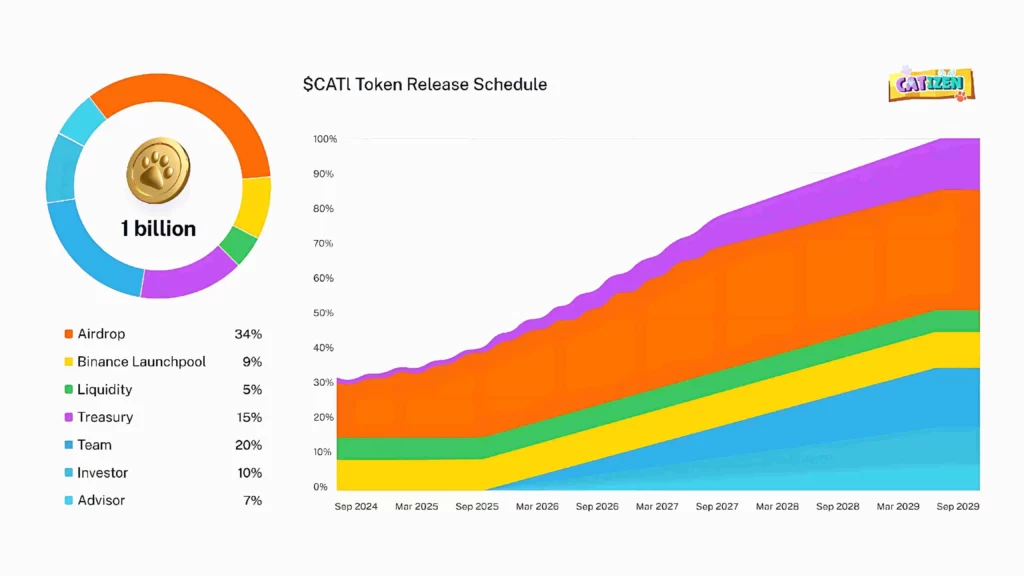Exploring the Sustainable Future of Catizen: Beyond Click-to-Earn
Throughout history, from the satisfaction of primitive hunting and gathering to the instant gratification provided by modern digital media, human development seems to have always revolved around one key neurotransmitter: dopamine. While often associated with pleasure, dopamine is much more than a simple “happiness hormone”—it is the driving force behind human learning, adaptation, and the pursuit of rewards.
However, dopamine’s influence is a double-edged sword. In the world of cryptocurrencies and blockchain, dopamine’s effects are amplified, particularly in speculative markets and emerging trends like Telegram Mini Games. These systems leverage dopamine-driven rewards to create unprecedented user engagement and economic models. But does this dopamine-fueled system offer long-term sustainability?
In the current boom of games built within the Telegram and TON ecosystem, the question arises: can a reward model based on instant gratification be sustained over the long term? While “tap-to-earn” games constantly stimulate the brain’s reward center, dopamine’s effects are fleeting. Can such models evolve into stable, long-lasting economic ecosystems?
Catizen’s Breakthrough in Tap-to-Earn Games
Following the success of Notcoin, the “Tap-to-Earn” model has garnered renewed market attention, and Catizen has emerged as one of the most notable projects in this space. On the surface, Catizen may appear to be yet another short-lived, dopamine-driven project. However, such a view would underestimate its true potential.
With the upcoming Token Generation Event (TGE), we will explore Catizen’s growth and future plans. This article will analyze its operational data, strategic development, and tokenomics to understand how this standout game aims to seamlessly transition from a successful early phase to a more sustainable and promising future.

The First Phase: Phenomenal Growth
Catizen’s well-crafted game mechanics and market anticipation have placed it at the forefront of the “Tap-to-Earn” craze. What many projects struggle with—user growth—has been skillfully addressed by Catizen, thanks to its understanding of dopamine-driven economics.
The Growth Myth: Powered by Dopamine
Embracing the traffic boom generated by “Tap-to-Earn,” Catizen has achieved impressive results. As of September 16, Catizen has attracted over 3 million on-chain active users, 2.2 million Telegram premium users, and recently reported a weekly growth of 4.7 million users. The total player base exceeds 39 million, with revenues surpassing $31 million.
The game has also attracted a high number of paying users, making Catizen’s business model—high traffic, high retention, and strong monetization—a resounding success for a Telegram Mini Game.
Behind these remarkable achievements is a skilled and experienced team. Catizen is developed by Pluto Studio Limited, a gaming studio with over 30 developers focused on technology. Pluto Studio also supports several Mini Games in the Catizen ecosystem.
Supported by major investors such as Binance Labs, HashKey Capital, and Folius Ventures, Catizen is not merely a passive collector of user attention. Instead, it actively channels this attention into deeper ecosystem participation, positioning itself as more than just a “click-to-earn” game. Millions of active users are not just chasing short-term rewards; they are entering a carefully designed ecosystem.
Transitioning to the Second Phase: Ecosystem Development
The massive growth and strong monetization of Catizen’s early phase have laid a solid foundation, but the real challenge lies in converting short-term traffic into long-term value. Catizen is not focused solely on competing for a share of the saturated Tap2Earn market. Instead, it seeks to expand by using its early success as a springboard to create a comprehensive, sustainable business ecosystem.
Miniapp Center: The Ecosystem Hub
At the core of Catizen’s second-phase development is the Miniapp Center—the ecosystem’s application hub. This center provides users with a wide range of applications based on their preferences. Embedded within the Catizen app, Miniapp Center seamlessly integrates with the game’s existing user base.
Ten applications are already live in the Miniapp Center, including Bombie, a meme game, and Vanilla Trading Bot, a trading tool for crypto investors. Both have shown excellent performance since their launch.

Bombie: A Playable Meme Game
Bombie takes the highly addictive game mechanics of WeChat mini-games and combines them with Web3 innovations like memecoin airdrops. This blend creates a system where players are motivated both to spend money and to earn through in-game rewards.
In just three weeks, Bombie attracted over 1.7 million users, with 700,000 daily active users and 40,000 paying users. It generated over $200,000 in revenue in two weeks, demonstrating the potential for Web3-based casual games.

Vanilla Trading Bot: Making BTC Trading Accessible
Vanilla Trading Bot allows users to trade BTC with minimal cost and risk, using as little as $10 to simulate large-volume BTC trades without actually holding the asset. This innovative tool has attracted 1.8 million registered users and 500,000 active traders since its launch on September 4.
Catizen’s Token Strategy: $CATI
A key component of Catizen’s future is its native token, $CATI. Unlike many projects that rely on a quick token release, Catizen has built a long-term, multi-functional token model. $CATI will serve as the universal currency across the Catizen ecosystem, including the Miniapp Center and other platform activities.
Token Distribution and Airdrops
Ahead of the TGE, Catizen has announced that $CATI will be airdropped to players with silver-tier rankings and above, with a total allocation of 43% of the supply. Of this, 34% is allocated for airdrops, with 15% released at the TGE for the first season’s rewards. Additionally, 9% will be released through a launchpool at the TGE.

Use Cases and Long-Term Value
The $CATI token offers numerous use cases, including in-game purchases, discounted services, staking rewards, and ecosystem governance. The token will play a central role in the overall development of the ecosystem, encouraging long-term participation and value creation for holders.
Conclusion
Through its continuously growing revenue and user base, Catizen has demonstrated the viability of its business model. Rather than chasing superficial mass adoption narratives, Catizen focuses on building a sustainable ecosystem that truly caters to the needs of Web3 users.
By linking short-term rewards with long-term value, Catizen is paving the way for a more sustainable future in the blockchain gaming industry.